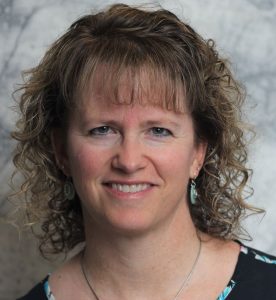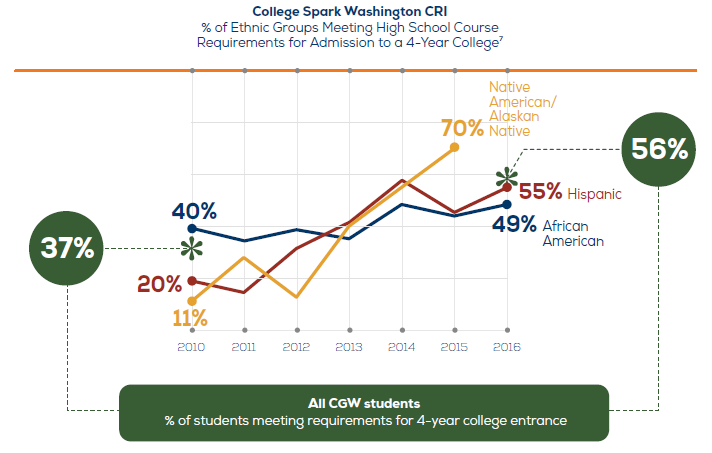 With the closure of school buildings and changes in routines because of the COVID-19 pandemic, we think it’s more important than ever for students to keep their goals in mind and work toward them. How can students explore and plan an education-to-career pathway that’s right for them? Building and revising their High School and Beyond Plan can help. We asked Kim Reykdal, school counseling lead for the Office of Superintendent of Public Instruction, some questions about what the Plan is and how students can benefit from it.
With the closure of school buildings and changes in routines because of the COVID-19 pandemic, we think it’s more important than ever for students to keep their goals in mind and work toward them. How can students explore and plan an education-to-career pathway that’s right for them? Building and revising their High School and Beyond Plan can help. We asked Kim Reykdal, school counseling lead for the Office of Superintendent of Public Instruction, some questions about what the Plan is and how students can benefit from it.
- What is the purpose of the High School and Beyond Plan (HSBP)?
The High School and Beyond Plan (HSBP) is intended to provide students with annual career and college exploration and preparation activities that address the guiding questions of “Who am I?,” “What can I become?” and “How do I become that?” Students work with school staff and their family to create a personalized plan that begins no later than 8th grade, is revised throughout high school, and results in a plan for a meaningful first step following high school graduation.
- Why was the plan developed?
Currently, about two-thirds of all jobs in our state’s economy necessitate post-high school education or training. Given the persistence of opportunity and achievement gaps for our students of color, students with disabilities, and students experiencing poverty, as well as Washington’s economic need to have a highly skilled workforce, our educators must ensure all students can make informed decisions that maximize their public education experience and prepare them for continued learning.
After becoming a requirement for earning a high school diploma with the Class of 2008, the HSBP has since evolved into a comprehensive guidance framework through which school staff provide career and college exploration and preparation activities during students’ middle and high school years. These activities help students choose relevant courses and applicable graduation pathway(s) that can prepare them for graduation and post-high school goals.
- How does the Plan positively impact students? Their families? Educators?
The HSBP provides students with the opportunity to create a roadmap for their future, with assistance from their school counselor, families, and other educators. Students who complete comprehensive HSBPs have been found to be more engaged in school, have higher graduation rates, better understand the connection between their learning and future career choices, and be more likely to pursue education and training after high school. Through completing their HSBP, students make informed decisions about courses to take that can best prepare them for transition into a technical college or program, an apprenticeship, the military, a 2- or 4-year college, or a job.
Great evidence comes from Washington’s College Readiness Initiative (CRI). From 2006–2016, in collaboration with College Spark Washington and Getting Smart, OSPI facilitated a program that supported 39 schools in implementing robust, personalized HSBP guidance. The CRI inspired a more positive school culture, greater student aspirations, and increased parent engagement. Using OSPI’s Career Guidance Washington curriculum via school-wide advisory classes, students were better supported in developing personalized learning plans that greatly increased the degree of college readiness for underrepresented students.

Through student-led conferences, families heard from their students about their academic progress, post-high school goals, and plan to reach their aspirations. One profound impact on families was the growing number of students who were prepared to be the first in their family to attend college. Educators reported that they built deeper relationships with their advisory students. They also noted positive impacts on school culture, student behavior, student engagement and aspirations, dual credit enrollment, graduation rates, and student readiness for that first step after high school. The full CRI Research Report is available here.
- How should students approach getting started with their plans? What kind of questions are best to ask themselves?
School staff guide students in starting their HSBP during middle school. Students begin with a career interest inventory, which helps them think about potential career matches for their interests, skills, and goals. The Washington Career Bridge inventory is a free online tool students can complete from home that could be a useful self-reflection and learning opportunity during extended school closures, especially for 8th grade students who have not yet completed it.
This information can then be used to guide students in making informed course choices for both 8th grade and, most importantly, 9th grade, as one way to help their transition into high school.
Since every school has a unique way of approaching the High School and Beyond planning process, middle school students can start by asking their counselor or teachers when they will get to take the required career interest inventory and start setting career and educational goals. Some important questions to ask may include:
- what do I like to do?
- what am I good at?
- what makes me happy?
- what am I passionate about?
- what problem might I want to solve?
- what goals do I have for my future?
- How can families and guardians be more involved in a student’s plan? Do you have any tips or suggestions to help adults support students in their plans?
During normal times, OSPI strongly encourages schools to implement student-led conferences, host family information nights, and remind parents and guardians to ask their student about their HSBP throughout the school year. HSBP progress checks should occur each year in coordination with course registration for the following school year. To ensure shared understanding of a student’s academic progress and graduation status, families should engage in these checks and acknowledge or approve their student’s course plan.
Supporting your student’s HSBP at home can include simple actions, such as posting their plan somewhere prominent around the house and periodically checking their academic progress and decisions about class choices against the list. This is a great way to spark additional conversations about what actions students are taking throughout high school to set themselves up for postsecondary training and opportunities that will lead to the career they’ve imagined.
It’s also a good idea to encourage the student to check in with their adviser, school counselor and/or college or career specialist – whomever is helping them develop their HSBP – periodically.
- What are some strong practices in making the plan most useful to students?
Online HSBP tools can help staff use the HSBP to benefit their students. For example, when a college representative or military recruiter is coming to visit, staff can let students who have saved that college or military branch know when and where they can meet with the representative. The key is to indicate that students are receiving this information and invitation because of what they’ve saved in their HSBP! The same process can be used to connect students to field trip opportunities, scholarships, internships and jobs, school activities, and more.
The HSBP can also increase students’ engagement in their learning and exploration of different post-high school options if we can use it to pave a clearer path toward their future aspirations and goals. Teachers can use online HSBP platforms to learn about their students’ career interests, post-high school goals, learning styles, and other information that helps them relate to students on a more personal level. Teachers can also use HSBP information to be more intentional in drawing connections for students between content they’re learning, skills they’re developing, and possible future careers.
- Are there any plan-related student success stories you’d like share?
While I worked as the HSBP facilitator at Olympia High School, a student we’ll call Joe was struggling to engage in an online career exploration activity. After the students had completed a career interest inventory and were working independently, I sat next to Joe to find out what was getting in his way. When I asked if he’d completed the inventory, he mumbled yes and remained focused on his screen.
I asked if he was curious about any of the job titles on the resulting list of jobs that might be a good fit for him. He shrugged his shoulders and said, “I don’t know.” When I asked what he liked to do, he shrugged again, bowed his head, and reluctantly uttered, “Play video games.”
Finally, I had something to work with! Now I was excited!
My next question was, “Did you know that you can actually play video games as your job?” After a long pause, as the words slowly sunk in, I watched Joe’s head come up as he turned toward me and uttered one word… “What?” I knew the door was now cracked open, so I continued, “Yes, there are quite a few jobs you can do related to playing video games. Why don’t you type ‘video games’ into the career search box on the screen and let’s see what comes up.” He did.
Five different job titles popped up from his search, and I encouraged him to click on the titles. For the first time, Joe was engaged in career exploration and quickly learned about jobs related to designing, developing, marketing, and testing video games. After just a few minutes, he once again slowly turned his head toward me, looked me in the eye, and said in a wondering voice, “I had no idea.”
In those few minutes, Joe found a path forward and a more tangible hope for his future. Through his High School and Beyond Plan, Joe developed a path toward a meaningful first step after high school. He went from earning C’s and D’s in his classes to earning B’s and C’s by the end of his freshman year. He took several related classes and, as a senior, spent half his school day at our local skill center in the DigiPen program. Thanks, in part, to the hope he found from engaging in his High School and Beyond Plan, Joe graduated with a scholarship to DigiPen, ready to pursue his chosen career and a meaningful plan for his future.
For more information about the High School and Beyond Plan:
- Ready WA: readywa.org/beyond
- OSPI: https://www.k12.wa.us/student-success/graduation/graduation-requirements/high-school-beyond-plan
- State Board of Education: https://www.sbe.wa.gov/our-work/high-school-and-beyond-plan
***
Ready WA would like to thank Kim Reykdal for her collaboration on this post and in creating Ready WA’s materials about the High School and Beyond Plan!